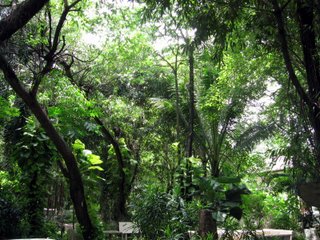
Meditation is found in some form or another in all major religious traditions but in Buddhism it is integral to the path to enlightenment. The practitioner trains his or her mind so that it can understand the four-points that form the core of the Buddha’s teaching: suffering, what causes it, the end of suffering, and the path to that end.
Consequently, the art of meditation is a highly developed one in Thailand. One doesn’t need to be a Buddhist, or even be interested in Buddhism, to benefit from meditation. A valuable training that can be applied to daily life, it greatly helps concentration and can lead to a state of peace and calmness, no matter where the meditation is performed.
There are two main branches in Buddhist meditation: Samatha (calmness, concentration) and Vipassana (insight), which stresses mindfulness.
The techniques of Samatha meditation are many, some of them older than Buddhism itself. Amongst the most commonly practiced in Thailand is Anapanasati, or “mindfulness with breathing”. Mantra meditation, in which given words are repeated over and over to help focus the mind, is also widely practiced. Kasinas, where mediators concentrate on an object outside themselves, such as a crystal ball and candle flame, is yet another form.
Sati, or mindfulness, is the key to Vipassana meditation. When the mind is untrained it is wide open to outside disturbances, and the objective is to be aware of what happens but not dwell upon it. So you train yourself to be aware of the body’s movement, the rise and fall of the chest as you inhale and exhale, the movement of the legs and feet as you walk, and your feelings and state of mind. Walking, sitting and lying meditation are a few of the Vipassana techniques, and to avoid distractions as far as possible the retreats are usually held in isolated and peaceful surroundings.
Meditation teachings are widely available in Thailand for Thais and visitors alike, ranging from English language day classes in Bangkok through to intensive month-long Vipassana courses at remote retreats in the provinces.
(adapted and translated by Santikaro Bhikkhu)
Sit up straight (with all the vertebrae of the spine fitting together snugly). Keep your head upright. Direct your eyes towards the tip of your nose so that nothing else is seen. Whether you see it or not doesn't really matter, just gaze in its direction. Once you get used to it, the results will be better than closing the eyes, and you won't be encouraged to fall asleep so easily. In particular, people who are sleepy should practice with their eyes open rather than closed. Practice like this steadily and they will close by themselves when the time comes for them to close. (If you want to practice with your eyes closed from the start, that's up to you.) Still, the method of keeping the eyes open gives better results. Some people, however, will feel that it's too difficult, especially those who are attached to closing their eyes. They won't be able to practice with their eyes open, and may close them if they wish.
Lay the hands in your lap, comfortably, one on top of the other. Overlap or cross your legs in a way that distributes and holds your weight well, so that you can sit comfortably and will not fall over easily. The legs can be overlapped in an ordinary way or crossed, whichever you prefer or are able to do. Fat people can only cross their legs in what is called the "diamond posture" (lotus posture) with difficulty, but fancy postures are not necessary. Merely sit with the legs folded so that your weight is evenly balanced and you cannot tip over easily -- that's good enough. The more difficult and serious postures can be left for when one gets serious, like a yogi.
